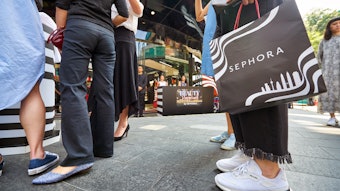The spa industry in Singapore is booming. The country has been positioned as the urban spa hub of Southeast Asia by the tourism board, despite its relatively small size and reported economic downturn.
The island city-state of Singapore is located on the southern tip of the Malay Peninsula, and consists of one main island area of 263 square miles surrounded by 63 islets. Aside from Monaco, it is the most densely populated independent country in the world, with a population of 4.48 million, according to government statistics. Tourism is huge. The Singapore Tourism Board said Singapore had 8.85 million international visitor arrivals in 2006, and Singapore’s spa explosion is due, in part, to this increase in steady tourism.
I wanted to see this urban spa hub up close and personal, so I recently spent a week in Singapore visiting some of the top local spas and sharing views on the industry with the professionals who run them. My journey was eye-opening and enlightening as I learned more about the trends and consumer demands that drive these businesses.
Advance Treatments, Back to Basics and Healing
Intelligent Spas’ Spa Industry Profile Singapore 2003–2008 identified that a key trend in the Singapore spa industry, indicated by managers and owners, is the competitive and affordable pricing currently being offered. The increase of medical-related treatments being introduced is another trend, and, as with the U.S. market, spa-goers in Singapore are looking for a total spa experience.
As for client trends, these Asian spas are seeing more male and younger clients, as well as more couples’ services, and gift certificate sales are on the rise.
At Estheva Spa, Tan Wee Tech, the spa’s director, sees the future trends combining antiaging treatments and massage.
“It’s all in the package,” he states. “The trend really is to put together comprehensive packages. It needs to be viewed as a lifestyle to help the client look good, and younger. Natural is also a trend. The spa industry is very competitive in Singapore; spas here must rise up in order to stay on top.”
Doris Sinnathurai, manager of RafflesAmrita Spa, feels that a big trend is the return to basics.
“A lot of Asian treatments are going back to ayurveda and Chinese traditions,” she explains. “Most of the treatments are hands-on—look at Thailand and India for examples. A lot of people come to Asia as a retreat and for detox programs, plus as a way of their lifestyle.
“In addition, a lot of America is coming to Asia. This includes old, traditional treatments. Singapore turns to the States for esthetics, products and technology,” she says.
My recent trip to Thailand proved this to be true. In Thailand, the trends are all about culture and remaining true to the land. “Those fortunate enough to have experienced the warmth and hospitality of Thailand will know all too well the genuine care and excellent service that are delivered here,” says Richard Williams, spa director at The Peninsula Bangkok. “As a culture that lives from the heart—even having ‘heart’ words in their vocabulary—therein lies the unique advantage to spas developed in Thailand. To have team members who take a genuine interest in their clients, care about their jobs and are proud to work in their respective fields is certainly a plus to the spa industry. All who return to Thailand will be welcomed with the warm wai, which is a prayerlike greeting—just like namaste in India—that offers respect and warmth to all who visit.”
What’s hot in Singapore? Sinnathurai is seeing a surge in body treatments using chocolate, tamaran scrub, papaya wrap, saffron and coffee as main ingredients.
To be honest, I found this to be a bit surprising, having come to this unique little island hoping to find something new and indigenous that couldn’t be found in the U.S. Thailand’s rich resources—including sugar cane, rain forest honey and jasmine rice—left me a bit spoiled.
The high turnover in service is a problem with spas in Singapore, according to Stella Yfantidis, founder of Whatever Yoga & Healing Space, who notes that it is a very business-focused country. She sees the industry evolving toward holistic therapy and wellness. To better position her spa for the future, she would like to franchise it and increase the focus on healing.
“I’d like to make it more spa-oriented and bring in more organic products, all natural-based. It’s all about going back to nature,” Sinnathurai says, adding that spas in Singapore are going away from pampering and moving more toward healing.
One major challenge that Asian spa owners face, says Tech, is that the industry is growing in all directions, and there is a lot of competition.
“They need to differentiate, and that is where the spa owner must get creative,” Tech stresses. “Spas need to have a mainstay treatment, in addition to developing signature treatments. Innovation is the key. Spas must be able to stand out in the crowd, and clients need to be able to differentiate between spas.”
Despite the challenges, the spa future looks promising for this business-savvy country, and with tourism on the rise, spa managers will be putting more marketing power into working on capturing this affluent market.
There is a lot that American spas can learn by looking to their Asian counterparts for guidance. “I think the Asian spa industry now is widely recognized—particularly in the hotel, resort and destination spa environment—and that guest will be looking for a cultural experience that embraces the local culture, and services and products will be developed to reflect this,” adds Williams.
By looking East, the American spa industry can gain new insights into up-and-coming trends, as well as a fresh perspective on standard treatments. This is a profession in which the human touch will never go out of style.










